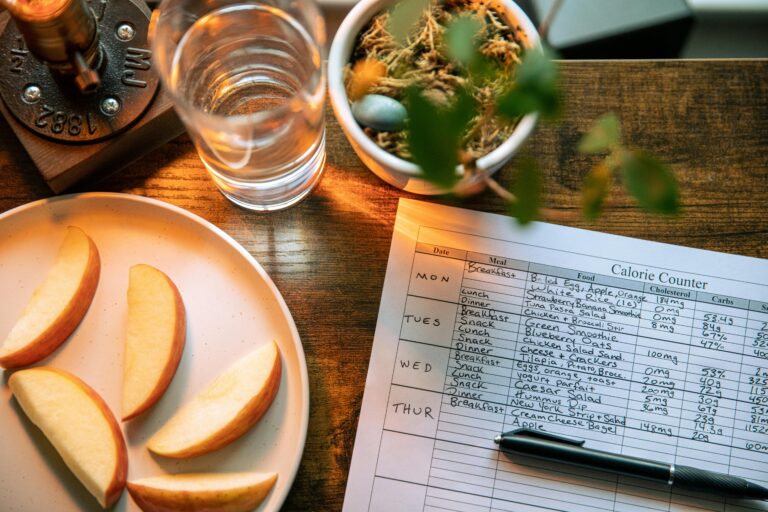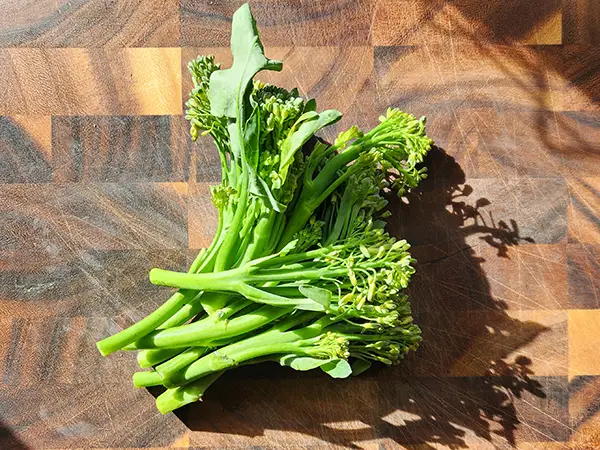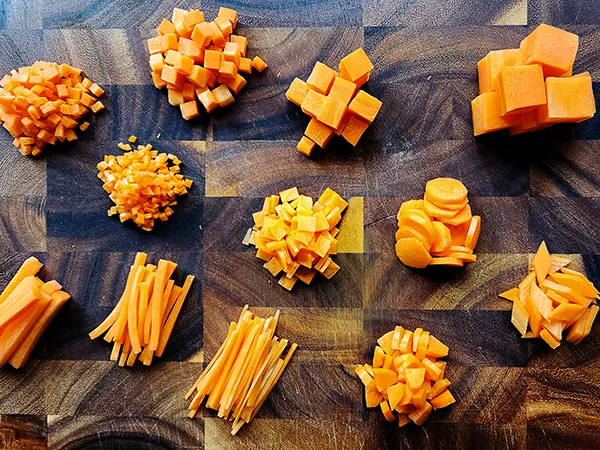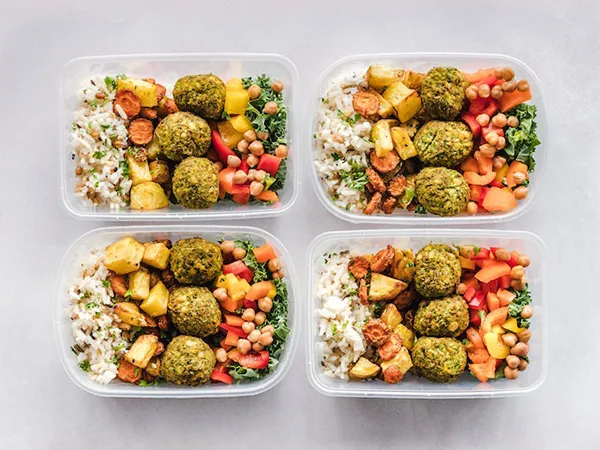How to learn to cook like a chef: 3 Levels to Release Your Inner Kitchen Superhero
Hey there, Food Lovers! Have you ever found yourself drooling over the tantalizing dishes whipped up by your favorite chefs on TV? Ever wished you could recreate that magic in your humble kitchen?
Well, I’ve got great news! YOU CAN. And guess what? It’s not as daunting as it seems.
It’s all about understanding the basics, adopting the chef’s mindset, mastering recipes, nailing the art of plating, and continually improving. So, grab your apron, sharpen your knives, and dive into the delicious world of cooking like a pro!
By the end of this post, you’ll be cheffing in your kitchen like a boss no matter who cooks what. So, are you ready to fire up your station with some cooking skills and get started?! Let’s dive in and figure out how to learn to cook like a chef!
How to learn to cook like a chef?

It’s not rocket science but you still need to know some basics for a pleasant experience in the kitchen. With this comprehensive guide, I will provide you with useful tips tools, and tricks on how to become a home cook and further.
I’ll help you to understand the basics of cooking and share extra tips from my personal experience. So, buckle up, and let’s get started!
To help you understand better I have split it into three levels.
Why should I learn to cook like a chef?
You might be asking, “Why should I learn to cook like a chef?” Apart from the fact that it’s a fantastic skill to have, it also allows you to take your cooking to the next level.
Imagine being able to recreate restaurant-quality food at home, or even create your unique dishes. Or finally learn how to cook vegetables, so they are tasty, not boring. Trust me – It’s a game-changer!
Plus, it’s a great way to impress your friends and family. And also a great way to save money, ahh the benefits are endless…
Benefits of learning to cook like a pro
You will learn Life-long, valuable skills
Cooking and eating restaurant-quality meals
You control nutrition and ingredients
You will save money
Eating visually appealing and tasty meals every day
You will have a deeper appreciation of different cuisines and cultures
You will be able to adjust to new dietary restrictions
Potential for culinary career advancement
You will survive on a deserted island (okay maybe not survive but increase your chances)
And most importantlyIt is so FUN when you know what are you doing in the kitchen
Do you need more reasons? I don’t think so! Let’s bring out the chef within you and elevate your culinary skills to new heights!
My Unique Process
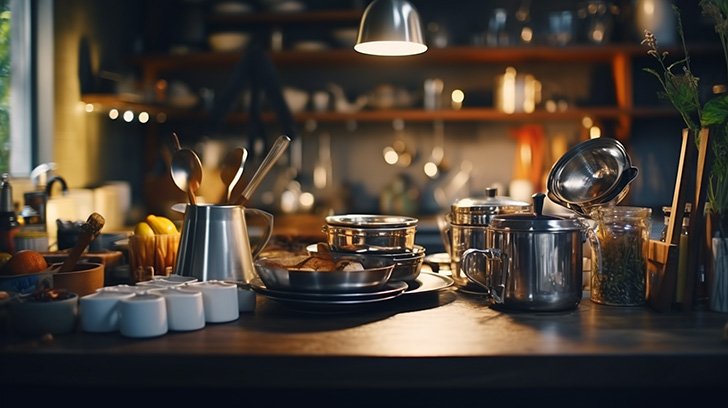
My process of learning to cook like a chef involves a healthy mix of theory, practice, and experimentation.
I have broken down this step-by-step guide into three levels:
Chef de partie (beginner)
Sous Chef (intermediate)
Executive Chef (advanced)
In every segment, I’ll provide relatable tips that will enable you to embark on your journey to cook like a chef.
With the help of this comprehensive guide and my expertise, you’ll feel empowered to step into the kitchen and begin your culinary adventure. Unlock your creativity, build confidence, and prepare remarkable dishes that will undoubtedly make a lasting impact.
Here is what you need to do!
I’ve whipped up this awesome guide and broken it down into three progressive levels. Cool, right? But before we jump in, let me tell you a bit more about it.
Each level is like a stepping stone, leading you to higher ground, packed with more skills, more knowledge, and yes, more practice. Kinda like leveling up in a video game! And the best part? I’ve carefully crafted each level to ensure YOU are set up for real success.
Chef de Partie
Alright, folks, I am kick-starting this adventure at the “Chef de Partie” level – think of it as the start of our culinary expedition. It’s here that we’ll master the ABCs of cooking, the essentials you need to get your kitchen groove on.
Sous Chef
Next, we’ll graduate to the “Sous Chef” level, a little more advanced, but hey, you’ll be ready! We’ll hone in on some intermediate techniques, adding some serious skills to your culinary arsenal.
Executive Chef
Our final destination? The ‘Executive Chef’ level. This is where the magic happens, guys. I’ll be sharing all my secret kitchen hacks and pro tips, the stuff you’ll only hear from a professional chef. l
Remember, cooking, like any other skill, takes time and practice to master, so don’t get discouraged if things don’t go perfectly the first time. Keep experimenting, keep learning, and most importantly, have fun!
So, let’s dive in, shall we?
Chef de partie
So, you’re just starting, huh? Well, THIS is the place to be! We’re going to dive into the delicious world of cheffing together and trust me, it’s going to be a BLAST!
Before you can start cooking and creating culinary masterpieces, you need to understand the basics. This includes knowing your way around the kitchen, prepping food, and learning to keep it clean and simple.
Understanding the Basics
In this section, you will learn
Prep before you cook
Follow the recipe
Basic knife knowledge
Know your ingredients
Food safety
Keep it simple
Keep it clean
Prep before you cook
Let’s be honest, we’ve all been in scenarios where we forget to add an ingredient or we add too much of something because we’re rushing to chop veggies while the onions are burning.
Mise en place, a French term that means “everything in its place,” is the first rule of thumb in the professional kitchen and should be the first in your home kitchen too.
This simple yet powerful practice involves arranging and organizing all your ingredients and tools before you start cooking.
So next time before you start to cook you need to
Put your apron and smile on
Get your chopping board and knife ready
Peel and chop all the ingredients that you will need for the recipe
Get your pan, oven, or grill nice and hot ahead of time
Get your water boiling
Get all your tools ready to go
Lay out and organize everything in sequential order
It’s not just about being organized; it’s about fostering a state of mind that’s calm, focused, and ready to create culinary magic.
It’s like gearing up before a big race; it sets the stage for a delicious triumph. So, my fellow food enthusiast, let’s prep like pros and conquer the kitchen!
Follow the recipe
How hard that could be, right? Trust me, I’ve had my fair share of kitchen mishaps, and the reason is that forgetting an ingredient or neglecting the suggested temperature can turn a masterpiece into a mess!
It’s like having a map for your travels. So, my friend, let’s learn from my past blunders and embrace the recipe as our trusted guide.
Now, let me share some golden advice on how to avoid those recipe blunders!
First things first, read the recipe thoroughly, not just once, but twice, HECK, even three times if needed.
Take note of all the ingredients and measurements, and gather them before you start cooking.
Don’t underestimate the importance of following the suggested cooking temperature and timing.
It is easier to find a recipe that suits you rather than changing the recipe because you can’t find a specific ingredient in your area. There are millions of recipes out there!
Like a chef following their secret formula, give your undivided attention to the recipe, that will help you create gastronomic wonders in your kitchen!
Learn basic knife skills
Let’s talk about the art of chopping like a chef! You need a good chef’s knife for that, read this guide to get the best for your money. Believe me, it’s a skill worth mastering.
Start with the humble onion. Trust me, once you conquer the onion, you’ll feel like a kitchen superhero. Next, you can try something harder like carrot or rutabaga.
And hey, don’t worry if it doesn’t sound exciting at first – knife skills are the gateway to more thrilling veggie-chopping adventures, like the carrot! (I know I didn’t sell it to you did I?)
I’ve got some helpful tips for you.
Place a wet napkin or tissue under your cutting board, and voila! It stays put, giving you the stability you need to work your magic.
Keep your knife sharp as a razor. The knife can slip if it is not sharp and it can end up with an injury.
Oh, if you want to level up-investing in a high-quality chef’s knife is like equipping a master swordsman with a carefully crafted katana.
Here’s a top secret tip: It’s called PRACTICE (not too much of a secret)
The key here is to start slow and chop it slow and accurately and focus on quality, the speed is going to come by itself.
Know your ingredients
Cooking becomes a breeze when you work with fresh, top-quality goodness. The secret lies in the ingredients themselves—they’re the star of the show!
High-quality ingredients bring out incredible flavors with minimal effort. No need to drown them in heavy sauces or overpowering seasonings. Let their natural awesomeness shine through!
So, here’s a pro tip: Build a good relationship with your local vendors. These amazing folks are your gateway to culinary excellence. They know their stuff and can guide you toward the crème de la crème of in-season produce and other top-notch goodies.
Trust me, they have the inside scoop! Your butcher can educate you on different cuts of meat, helping you find that perfect slice for your masterpiece. Meanwhile, your fishmonger can hook you up with the freshest catch of the day, ensuring your seafood dishes are swimmingly sensational.
Remember, my friend, the key is to embrace these connections and tap into their expertise. And don’t be afraid to ask for advice. Ask questions about how was the food sourced, or if is it hard to cook a specific cut of meat, they will give you their advice and it will muster new relationships.
Don’t forget about food safety!
Now, let’s talk about an essential aspect of cooking that should never be overlooked: food safety! Just like paint spreading from one canvas to another, bacteria from raw meats can transfer to other ingredients, and just like paint it goes everywhere!
So, let’s play it smart! Keep different cutting boards for different food groups, like a dedicated one for meats and another for veggies. And hey, when handling raw foods, let’s be extra cautious.
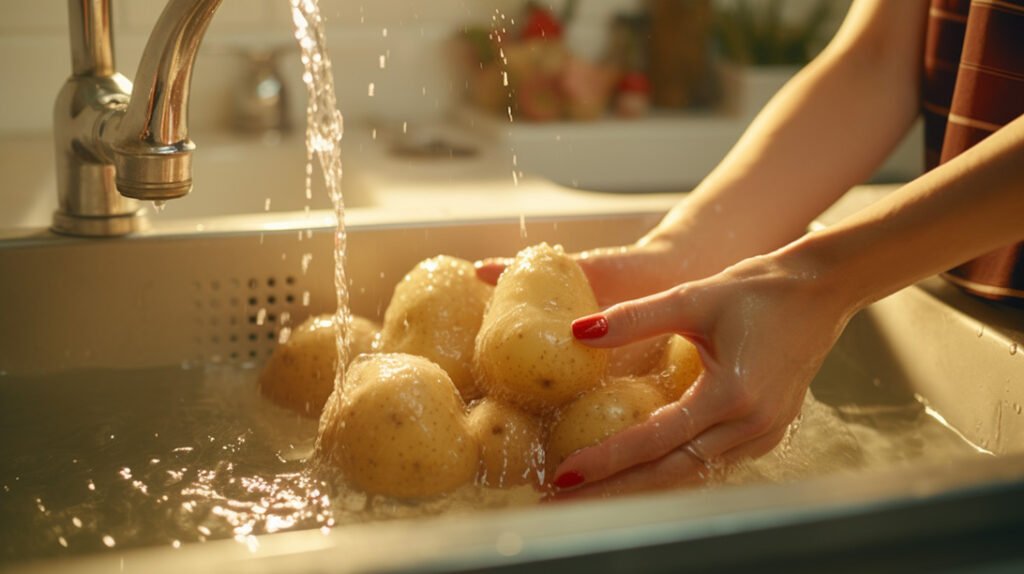
Keep personal hygiene at the top level by washing our hands frequently and thoroughly. Don’t forget to clean utensils and equipment promptly. It’s like maintaining a clean canvas for our gastronomic creations.
So, Chef, let’s prioritize food safety, and create with confidence, knowing we’ve taken all the necessary precautions!
Salt and pepper will do just fine
As you embark on your culinary journey, I have a piece of advice that will set you on the path to flavor enlightenment.
Keep it simple and stick to the classic combination of salt and pepper. Why, you ask? By allowing the essence of each ingredient to shine through, your taste buds become like seasoned detectives, quickly identifying and appreciating the individual flavors dancing on your palate.
Just like knowing your musical notes before playing an instrument, understanding the original flavors helps you create culinary symphonies that delight and surprise.
So, my fellow flavor explorer, let’s embrace the simplicity of salt and pepper and embark on a culinary journey!
Clean as you go!
Cleaning as you cook is an essential practice that holds significant importance in maintaining a clean and organized kitchen. Not only does it help to minimize clutter and create a more efficient cooking process, but it also promotes hygiene and food safety.
When you clean as you go, you’re not just maintaining order and minimizing chaos; you’re also keeping those pesky germs and cross-contamination at bay. Oh, and did I mention the TIME and EFFORT you’ll save? Say goodbye to a mountain of dirty dishes and a messy kitchen that screams “Clean me!” after every meal.
We’re talking about less cleanup and more time to enjoy your culinary masterpiece.
So let’s embrace cleanliness!
Skills you should learn at this level
Basic knife skills
You should be able to read most of the recipes
Understand the importance of preparing ahead
Follow food hygiene and safety
Understanding flavors and ingredients
Here is a list of tools you will need to learn to cook like a chef:
Good quality chopping board
Good quality frying pan
Digital scales
Few mixing bowls
Plastic or wood Spatula
Yes, that is it! Nothing else to start this amazing journey!
Dishes you should try at this level
Porridge with fruit salad
Baked chicken with sweet potato
Sous Chef
Now you know your way around the kitchen and you have your basics covered. It is time to take your culinary prowess to the next level and unlock the secrets of professional chefs!
Just like an artist approaches a blank canvas with creativity and passion, a chef must embrace a mindset of curiosity, experimentation, and fearlessness in the kitchen. Embrace the “I CAN DO IT!!!” attitude, and don’t be afraid to fail because that’s where true growth lies.
As you continue on this exciting culinary journey, you’ll explore advanced cooking techniques that will make your taste buds dance with joy! In addition to honing your technical skills, exploring advanced cooking techniques can open doors to a world of flavors and textures.
From chef’s mindset to the art of plating, we’ll uncover the secrets that top chefs use to create unforgettable dining experiences.
So, fasten your apron and get ready to unleash the chef within – the kitchen is your canvas, and your imagination is the only limit!
Let’s dive deeper into the pan!
In this section, you will learn
Advanced cooking techniques
Adjusting the recipes to your needs
Advanced knife skill
Master food pairings
Seasoning and spice mixes
Plating and presentation
The Chef’s Mindset
Before I dive into any culinary adventure, there are a few essential steps I always take to set myself up for success. Just like a carpenter needs their tools and materials ready to create a masterpiece, a chef needs a well-prepared workstation.
Picture this: a clean and organized space, with all the necessary ingredients and utensils within arm’s reach. Getting your pan or oven nice and hot is crucial for achieving a beautiful sear. It also saves time and you can start peeling veg!
Prepping your food ahead of time is another key aspect. Just as a carpenter measures and cuts their wood meticulously, a chef carefully washes, chops, and slices their ingredients with precision. This not only saves time during the actual cooking process but also ensures a seamless and enjoyable experience.
So, remember to treat these steps as second nature, and watch as your culinary creations turn into edible works of art!
Embrace the Heat: Learning Advanced Cooking Methods
If you’re ready to take your cooking skills to new heights, then it’s time to dive into the world of different cooking methods.
Just like a musician who learns various techniques to master their instrument, a chef must explore and embrace a range of cooking methods to create extraordinary flavors and textures.
Embrace the power of the heat! Whether it’s the gentle art of simmering, the intense heat of grilling, or the precision of sous vide, each method brings its unique magic to the table. Understanding heat and how it affects different ingredients is key.
By expanding your repertoire of cooking methods, you’ll unlock a whole new level of creativity and versatility in the kitchen.
Cooking methods you can explore:
Level 1 Sous chef
Roasting: Cooking food in dry heat, often in an oven, to achieve a golden and caramelized exterior while retaining moisture.
Grilling: Cooking food directly over an open flame or hot coals, imparting a smoky and charred flavor.
Pickling: Preserving ingredients in a brine or vinegar solution, resulting in tangy and flavorful additions to dishes.
Sous vide: Cooking food in a precisely controlled water bath for enhanced tenderness and flavor.
Level 2 Sous chef
Smoking: Infusing foods with rich smoky flavors using a smoker or stovetop smoking techniques.
Fermentation: Harnessing the power of microbes to transform ingredients, creating complex and tangy flavors.
Dehydration: Removing moisture from foods to intensify their flavors and create crispy textures.
Pressure cooking: Using a sealed vessel to cook food quickly at high pressure, resulting in tender and flavorful dishes.
Infusion: Extracting flavors from herbs, spices, or fruits by steeping them in liquids like oils or spirits.
Emulsion: Creating stable mixtures of immiscible ingredients, like mayonnaise or hollandaise sauce, by blending them.
Infusion: Extracting flavors from ingredients by steeping them in liquids, such as creating infused oils or flavored spirits.
Curing: Preserving and flavoring meats, fish, or vegetables through processes like salt curing, brining, or smoking.
Level 3 Sous chef
Charring: Applying high heat (usually with a torch) to create a charred or caramelized exterior, adding depth and complexity to the flavor profile.
Molecular gastronomy: Utilizing techniques like gelification, foams, and powders to transform textures and create visually stunning dishes.
Molecular spherification: Transforming liquids into gel-like spheres using hydrocolloids for a visually stunning presentation.
Temperatures: Exploring specific temperature control techniques, such as low and slow cooking, to achieve desired textures and flavors.
With each method you learn, you’ll add a powerful tool to your cooking arsenal, and your taste buds will thank you for it!
Practice Makes Perfect
Just like any other skill, cooking requires practice. Start with simple recipes and gradually move on to more complex dishes.
Don’t get discouraged if you don’t get it right the first time.
Even the best chefs have had their share of kitchen disasters. The key is to keep learning and experimenting. Try out different cuisines, learn about exotic ingredients, and don’t be afraid to make mistakes. Remember, it’s often our mistakes that lead us to create something truly unique and delicious.
A Love Affair with Your Kitchen Tools

To truly unleash your inner culinary artist, it’s worth considering investing in quality equipment. Just like a painter needs high-quality brushes to create a masterpiece, a chef needs reliable tools to craft exceptional dishes.
Let’s unlock the true potential of your cooking prowess and take your culinary creations to the next level!”
Remember, you don’t need to splurge on the most expensive brands but don’t compromise on quality either. I compiled a list of necessary tools at this level.
Here is a list of tools you will need to learn to cook like a chef:
More pans and pots
Cheese grater
Strainer
Whisk
Pairing knife
Silicon spatula
Food containers and ziplock bags
Fancy plates (stoneware are my faves)
Meat thermometer
One of the most underrated tools in the kitchen is a meat thermometer. It is ideal for measuring the perfect temperature of the meat before you get a hang of it.
Mastering Recipes
To truly master recipes like a seasoned chef, there are a few key steps to follow. First, as we already know, read the recipe thoroughly, not once but multiple times, to ensure a clear understanding. Pay attention to every detail, from the ingredients to the cooking techniques. Second, don’t be afraid to experiment and modify recipes to suit your taste.
Yes, you are at that level now!
Add your own flair and creativity to elevate the flavors. And finally, practice, practice, practice! The more you cook, the more comfortable and confident you’ll become.
The Art of Seasoning
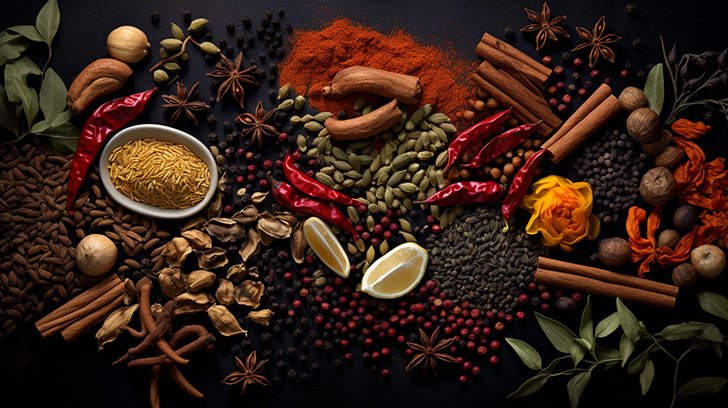
Learning how to properly season your food can elevate your cooking from good to exceptional. Seasoning is not just about salt and pepper. It’s about enhancing the natural flavors of the ingredients and balancing the different taste elements – sweet, sour, bitter, salty, and umami. That makes your food taste good…
Learning how to season requires a bit of practice, and the best way to learn is by tasting your food as you cook. This way, you can understand how different seasonings affect the food and adjust accordingly.
This is the part where you let your imagination and creativity loose, sometimes it won’t work, but other times you will find exceptional combinations.
Try using different spices such as
Coriander
Cumin
Coriander
Bay leaves
Cardamom
Cloves
Fennel seed
Caraway seeds
Smoked paprika
- Star anise
- Saffron
- Nutritional yeast
Red pepper flakes
Try herbs such as
- Cilantro
- Parsley
- Coriander
Tarragon
- Sage
Marjoram
Mint
- Thyme
- Rosemary
- Oregano
Experiment with these acids
- Apple Cider Vinegar
- White/Red wine vinegar
- Rice Vinegar
- Lemon/Lime Juice
- Yogurt
- Sour Cream
- Butter Milk
- Tamarind Paste
- Pomegranate Molasses
- Tomato Paste
Here are some Umami ingredients
- Soy sauce
- Miso paste
- Fish sauce
- Worcestershire sauce
- Dried Mushrooms (e.g., shiitake, porcini)
- Kombu (seaweed)
- Bonito flakes
- Dried shrimp
- Oyster sauce
- Fermented black beans
- Green tea
The Art of Plating: The Final Touch
The presentation of your dish is just as important as its taste. Chefs are not just cooks; they are artists who create edible masterpieces. The way a dish is presented can enhance the dining experience and make food more appetizing.
Experiment with different plating techniques, and play with colors and textures.
Try arranging your food in a visually appealing way, you can try it multiple times!
Don’t cram the plate or fill it- let your dish breathe a little bit.
Use finely chopped herbs or micro-herbs for garnish.
When you add sauces or pures to the dish, use squeezy bottles to achieve even blobs and perfect lines!
Remember, we eat meals with our eyes first!
Skills you will know at this level
Think ahead
Know most cooking techniques
- Understand spice and seasoning
Have advanced tools
Recipe adjustments
Food plating
Executive Chef
Still here? Wow! You are interested in cooking! Now that you have come this far, It is time to take your culinary powers beyond the kitchen!
Managing Food Stock and Planning Meals
This is where WE plan our meals, WE save time, WE save money, and unnecessary trips to the grocery store. It’s like having a superhero power, ensuring our pantry is stocked with the right ingredients to create scrumptious meals without the stress of last-minute scrambles.
Tips to save money and time
Shop non-perishables and in bulk
Shop grains and beans in bulk
Buy stuff like food wraps, zip lock bags, foil, and parchment paper in bulk on
Canned goods can be purchased in bulk
- Plan your meals and food budget
And let’s not forget the joy of getting creative with leftovers!
Transforming yesterday’s dinner into today’s gourmet lunch is like giving new life to a classic story. So, let’s embrace the power of managing food stock and meal planning.
Planning Food Budget
The art of planning a food budget for our humble home!
Now, imagine this: You want to indulge in delicious meals while keeping your wallet happy. How do we strike that perfect balance? Well, chefy, it’s all about a little thing called budgeting.
YOU can start by assessing your monthly income and setting aside a realistic amount for groceries. Think of it as a financial game plan, where WE allocate our resources wisely.
But here’s the secret sauce: meal planning comes to the rescue once again! By mapping out our meals, YOU can create a shopping list with purpose, avoiding impulsive purchases that dent our budget.
YOU can explore affordable ingredients, find budget-friendly recipes, and discover hidden gems in your local markets. It’s like embarking on a thrilling treasure hunt for flavors that won’t break the bank! Embrace the challenge of planning a food budget for your home.
You’ve got this, chef!
Building Your Style
It’s like creating a masterpiece that reflects our personality, taste preferences, and creative flair!
So, how do WE build our style?
Well, it’s all about experimentation, inspiration, and a dash of confidence. You can start by exploring different cuisines, trying out diverse flavors, and getting inspired by culinary heroes.
It’s like gathering puzzle pieces from various sources and weaving them together to form our culinary tapestry. Don’t be afraid to put a twist on traditional recipes, adding your flair and unique ingredients.
Think of it as being a DJ, mixing flavors and techniques to create a symphony of taste.
Continual Learning and Improvement
The culinary world is vast and ever-evolving. New cooking techniques, ingredients, and food trends are constantly popping up. So keep learning, experimenting, and pushing your culinary boundaries.
Never Stop Learning!
Read cookbooks
Watch cooking shows
Follow food blogs
Try out new recipes
When you travel always eat local food
Talk about food and spread the love
The more you learn and practice, the better you’ll get at cooking, simple as that!
What to do to master this level?
Plan food budget
Plan menus for days ahead
- Plan stock for months ahead
Mastering advanced cooking methods
Have loads of cooking experience
Make and test your recipes
Even more tools?
This is the level where you get the heavy-duty stuff for your home – like blenders and dehydrators!
Here is a list of tools you will need to learn to cook like a chef:
High-speed blender
Electric mixer
- Stand mixers
Sous vide
Dehydrator
Don’t forget to Enjoy the Process
Last, but not least, remember to enjoy the process. Cooking is not a chore or a means to an end. It’s a creative process that can be incredibly fulfilling and enjoyable. When you cook with love and joy, it reflects in your food.
So the next time you step into your kitchen, put on some music, pour yourself a glass of wine, and lose yourself in the beautiful act of creating delicious food.
Learning how to cook like a chef is a journey, not a destination. It’s about constantly learning, growing, and pushing your culinary boundaries. But more than anything, it’s about discovering the joy and fulfillment that comes from creating delicious food from scratch.
So grab your apron, and let’s get cooking!
Extra Tips on How to Learn to Cook Like a Chef
Here are some extra tips I’ve picked up that can help you learn to cook like a chef.
First, always taste your food as you go. It’s funny, but most chefs don’t taste their food by making excuses that they surely know how it should taste and assure you that it’s perfect. But let’s be honest, even the same ingredients can taste different, so it’s crucial to make sure it all tastes good and fresh.
This will help you adjust the seasoning and ensure that your food is flavorful. Second, invest in good quality ingredients and some equipment like a chef’s knife. They can make a significant difference in the taste of your home-cooked food. And finally, don’t be afraid to make mistakes. They’re often the best learning experiences.
Beyond This
If you’re serious about how to learn to cook like a pro, you might want to consider taking in-person cooking classes or online cooking classes, or the best way to enroll in a culinary school. It will elevate your skills to the next level!
There are also plenty of online resources available to teach you, including online cooking classes, tutorials, blogs, cooking shows, and recipe websites. I learned a lot from YouTube videos of home chefs and popular chefs making challenges and discovering new dishes.
How I Became a Professional Chef?
Let me tell you about my wild journey to becoming a pro. Picture this: I was just a 16-year-old clueless soul, wandering around without a clue. So, during the summer break, I decided to lend a hand to my mom at her job. She was swamped with work, and I thought, ‘Why not?’ Little did I know, her boss noticed my enthusiasm and gave me a job! Bam! Suddenly, I found myself clocking in 40-50 hours a week like a pro.
Summer flew by, and guess what? Even when school started, I couldn’t let go of my newfound passion. Every single weekend, I was still at it, honing my skills. When I passed my exams I decided to take it a step further, by enrolling in a cooking school. It involved advanced classes, countless hours of practice, and oh boy, so many mistakes! But you know what fueled me?
My burning passion for food. It kept me going!
And here’s the kicker: You can do it too! Seriously, if I can stumble my way into this amazing journey, so can you! Embrace your passion, work hard, make those mistakes, and watch yourself become a pro in no time.
How to Make Sure You Learn to Cook Like a Chef?
The best way to ensure you learn to cook like a chef is to practice, practice, practice. Cook every chance you get, try out new recipes and techniques, and don’t be afraid to step out of your comfort zone.
Remember, every chef started where you are now. With dedication and persistence, you can become a professional chef and food superhero!
FAQ
Can I teach myself to be a chef?
Yes, you can teach yourself to be a chef! It’s all about passion, practice, and exploring your creativity in the kitchen. With endless resources online and a willingness to learn from both successes and failures, you’ll be whipping up delicious dishes in no time.
What are the 5 basic cooking skills?
Knife Skills, Heat Control, Flavor Balancing, Ingredient identification, and Time management.
How can I develop my cooking skills?
Practice regularly, follow recipes closely, learn from others (shows, books, tutorials), embrace mistakes and learn from them, explore new ingredients, consider taking a cooking class, seek feedback from friends and family, and stay curious and open-minded.
What should a beginner learn to cook?
Start with simple recipes like porridge, and egg dishes and gradually expand your repertoire. Enjoy the learning process and have fun in the kitchen!
Final thoughts
This is my step-by-step guide to becoming a culinary maestro in the kitchen! I’ve broken it down into three sections: Chef de parties (for beginners), Sous Chef (for the intermediate folks), and Executive Chef (for the kitchen samurai).
Find out how to learn to cook like a chef at home and benefit yourself with mouthwatering dishes you will be able to create! It’s not as complicated as it looks! Elevate your cooking techniques with me!
This guide and useful tips will help you elevate your kitchen skills! From the basic cooking techniques to the high-level chef.

But here’s the thing: Cooking like a chef is more than a destination; it’s an exciting journey! It’s all about constantly learning, experimenting, and leveling up your skills. Embrace the process in your kitchen, and savor every moment of this tasty adventure! Remember, even the greatest chefs started as beginners, just like you.
If you have any questions along the way, I’m right here to help. Remember, take it one bite at a time, and have a fantastic week!

